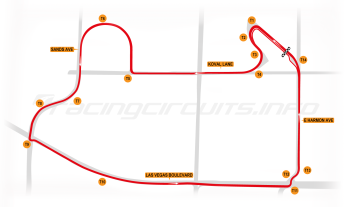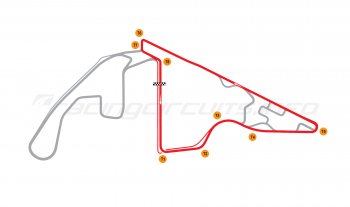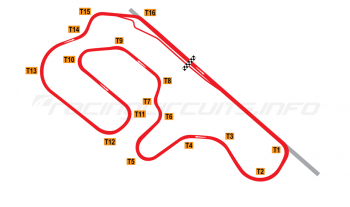Luanda
Circuit Overview
When it first opened in 1972, the Autódromo Internacional de Luanda was hailed as the most sophisticated circuit of its type in the world and a template for all modern circuits to follow. The track in the Angolan capital boasted an Indianapolis-style oval course, multi-configuration road course and all the mod-cons of the day, including an electronic marshalling system.
Designed to showcase national pride and match its colonial master Portugal, the circuit was also the first in the world to employ gravel traps.
Sadly, the civil war stymied activity as far as motorsport was concerned, until a revival in the 2000's under private ownership breathed life back into the venue. However, by the end of the 2020s it had fallen into decline again, with government investment said to be needed to breathe further life into it. The coronavirus pandemic added another layer of uncertainty, with the track surface falling into considerable disrepair. However, in July 2021, racing resumed following intervention from the Angolan Federation of Motor Sports.
Circuit History
The circuit began life as an exercise in colonial one-upmanship. With Portugal building the Estoril circuit in the hope of attracting a Formula One Grand Prix, the authorities in Angola were keen not to be left behind and launched their own ambitious scheme. The project was announced as the biggest sporting tourism investment on the continent and "unparalleled in the world," complete with apartments, shops and a casino.
And what better way to steal the headlines than by employing the same architect who had penned Estoril to design the whole facility - and to finish it first. So it was that the Angolan company Autodel SARL entrusted the project to Ayrton 'Lolô' Cornelsen 1971, with a challenging deadline for completion of May the following year. As an incentive, AutoDel granted the architect Cornelsen a stake of seven percent of all revenue generated by the project - unsurprisingly, the ruse worked!
With the assistance of engineer Júlio Basso, work soon began with construction permits approved by Ministry of Construction. Among the innovations pioneered at Luanda by Cornelsen were the first gravel traps seen anywhere in the world, which impressed greatly Emerson Fittipaldi when he inspected the facility in March 1972.
Against the odds, the track and its associated facilities - including an impressive control tower, modern pits and a large grandstand on the start/finish straight - was finished and ready to host its first race on May 28, 1972 - three weeks before the race track in Estoril. The first race was won by the Angolan racer Hélder de Sousa in a Ford Capri 2600 GT in front of a capacity crowd which had packed the circuit from early morning onwards.
While sportscar and GT races would attract some overseas competitors and prove successful in their own right over the next two-and-a-half years, Luanda's summer in the sun for international racing was all-too brief. The hype over its opening began to fade quickly and infighting in 1974 led to the cancellation of most of the track's events that year.
Worse was to come with the outbreak of civil war following the country's independence fro Portugal in 1975. When anti-colonial rebels seized power, all Portuguese enterprises were nationalized, forcing Lolô to leave Angola and motor racing ground to a halt. The facility was taken over by the military and later the police as a training facility and seemed unlikely to return.
Fast forward more than 20 years, however, and the sound of racing engines reverberated round the facility once again. In 2007, five years after the end of the long civil war, the track reopened, using a modified 2.72 mile (4.38km) layout for local events. While the days of yearning for a Formula One race were clearly well behind it, the autodrome could at least help foster the revival of the Angolan national racing scene, which as before is centred on the track which was once fêted as a world-beater.
In 2014 the owner of the land, the entrepreneur and university teacher Laurinda Hoygaard, announced investments to broaden the offer for visitors. However, it was considered that funding from public authorities to be a prerequisite for this, which seemed to be less than forthcoming.
For several years the Angolan Federation of Motor Sports rented the circuit to conduct racing, however, the lack of investment began to show. With a pause in all activity caused by the coronavirus pandemic, the track surface deteriorated to an alarming degree, with video footage showing huge weeds growing through the racing circuit and kerbing falling apart.
Happily, as a consequence of the Federation being recognised by both the FIA and FIM late in 2019, funding was secured to make necessary updates. In July 2021, the circuit buzzed again to sound of racing engines. The Grande Prémio "Batatas Fritas Palanca" is set to become a regular fixture, with the aim once again to secure the circuit as the home of the Angolan racing scene.
Jump onboard
Circuit info
- Autódromo Internacional de Luanda, Angola
Rate This Circuit
Votes: 4195
Plan a visit
Get your race tickets!
Brought to you with: 
We've teamed up with Motorsports Tickets to bring you the best deals for Formula One, MotoGP, Le Mans and more.















